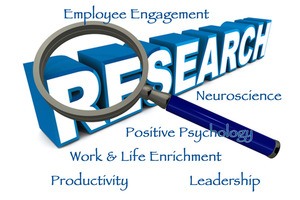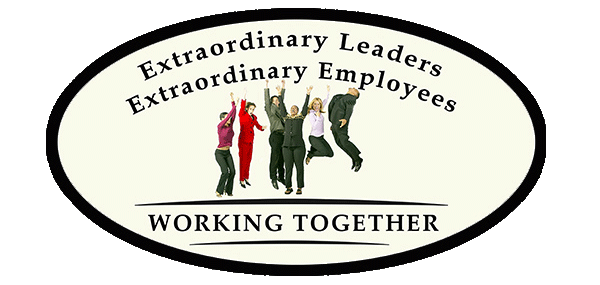HAPPY EMPLOYEES ARE PRODUCTIVE EMPLOYEES
Conventional wisdom tells us that if we work hard, find the right job, achieve a high enough income, fill the perfect home with plenty of things, and lose those ten extra pounds we will be happy. Well, here’s the thing. What has been called ‘conventional wisdom’ sounds an awful lot like ‘convenient wisdom.’ You know, our tendency to confuse correlation with causation.
Recent studies in the fields of positive psychology and the neurosciences show us that the aforementioned perspective is actually backward – happiness fuels success and helps us put things in their proper place, not the other way around. You may want to read this last statement again. The research is very clear about the relationship between success and happiness.
Thanks to these two cutting-edge sciences, we now know that happiness is a prerequisite for enduring success and not the result. That suggests that a company’s competitive edge is happy, optimistic, creative, engaged employees.
Businesses who want to be competitive and remain competitive in today’s economy – any economy – need to take a serious look at cultivating a business climate that produces happy employees as much as it produces superior products and services.
This is not just a ‘pie-in-the-sky’ blogcast entry from two business consultants who want to drum-up business in their chosen specialty. It’s our invitation to businesses, senior management, supervisory personnel, and hourly employees to make the changes they have to make to ensure bottom line results and market share.
 For example, an important 2010 research study found when examining more than 2,000 business divisions of ten large companies, happy people simply work harder. They’re also more optimistic, imaginative, creative, decisive, team-oriented, and productive (Harter, et al).
For example, an important 2010 research study found when examining more than 2,000 business divisions of ten large companies, happy people simply work harder. They’re also more optimistic, imaginative, creative, decisive, team-oriented, and productive (Harter, et al).
Other studies have shown that when leaders are optimistic and positive, their employees tend to exhibit those qualities too. They also tend to display pro-social attitudes, camaraderie, unselfish resource sharing, and a ‘let’s get the job done right’ perspective. (George, 1990; Sy, et al, 2005).
Still other studies report that there is such a thing as ‘group emotion’ in work settings. Organizational psychologists have found that every workplace has what is referred to as ‘group emotion’ which over time creates an ‘emotional norm’ for the entire organization. (Kelly and Barsade, 2001).
So What Does This Mean To You, As a Leader?
The implication is that businesses can create a ‘group happiness norm’ that fuels the productivity, making employee loyalty, customer satisfaction, and increased market share perennial ‘company norms.’ That’s the kind of ‘capitalization’ that keeps companies successful regardless of the ups and downs in the economy. The surest way to grow market share turns out to be investing in their ‘happiness portfolio.’
That’s what excites us about the work we do with the companies we care about: helping companies engineer work environments that bring out the extraordinariness in the people that produce the products and services that guarantee the company’s enduring profitability and marketplace presence.
That being said, the popular old saw ‘don’t worry be happy’ can certainly apply to companies which don’t have to worry about profits when their employees are happy.
What Can You Do Right Now?
 Take a moment to do a quick walk around. Drop in on every area where employees you manage are working. Have no other agenda than to just visit. Pay attention to the following things:
Take a moment to do a quick walk around. Drop in on every area where employees you manage are working. Have no other agenda than to just visit. Pay attention to the following things:
- How comfortable (or uncomfortable) are you feeling as you walk around with no agenda other than to visit the work area?
- How comfortable are your employees with your impromptu visit?
- What attitudes are obvious among employees?
- What immediate things do you become aware of that you want to explore further?
This quick check-up can give you an immediate impression about the happiness quotient in your workplace right now. Stay tuned to this Blog site for articles packed with ideas to help you build work environments conducive to employee engagement, satisfaction, happiness, and productivity!
Research support:
George, J.M., and K. Bettenhausen, “Understanding pro-social behavior, sales performance, and turnover: A group level analysis in a service context,” Journal of Applied Psychology, 75, 698-709, 1990.Harter, J.K., Schmidt, F.T., Asphund, J.W., Killham, E.A., and Agrawal, S., “Causal impact of employee work perceptions on the bottom line of organizations,” Perspectives on Psychological Science, 2010; 5 (4): 378-89.Kelly, J.R. and S.G. Barsade, “Mood and emotions in small groups and work teams,” Organizational Behavior and Human Decision Processes, 86, 99-130, 2001. Sy, T., Cote, S., and Saavedra, R., “The contagious leader: Impact of the leader’s mood on the mood of group members, group affective tone, and group processes,” Journal of Applied Psychology, 90, 295-305, 2005. Photo Credits, used with permission: © Clipart.com | 36237164© Cher Holton (with clipart.com)
© Cher Holton (with clipart.com)


